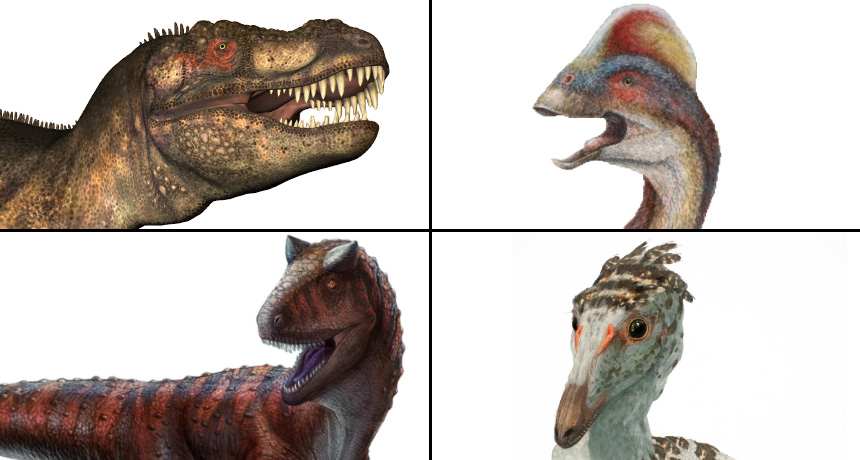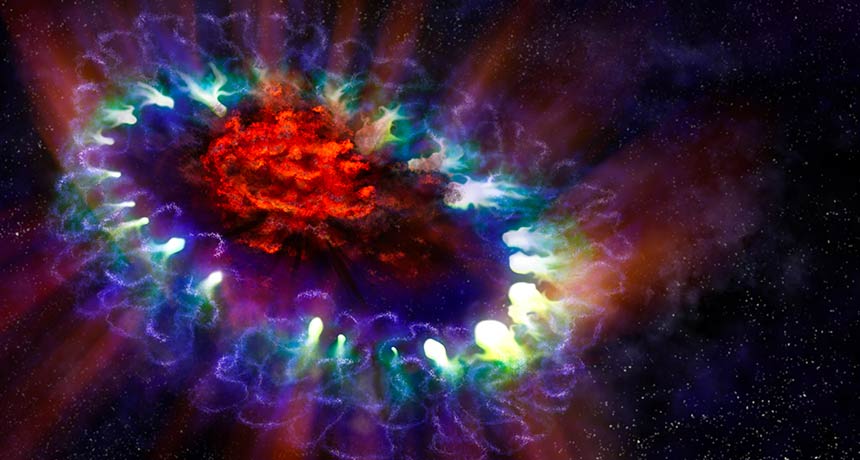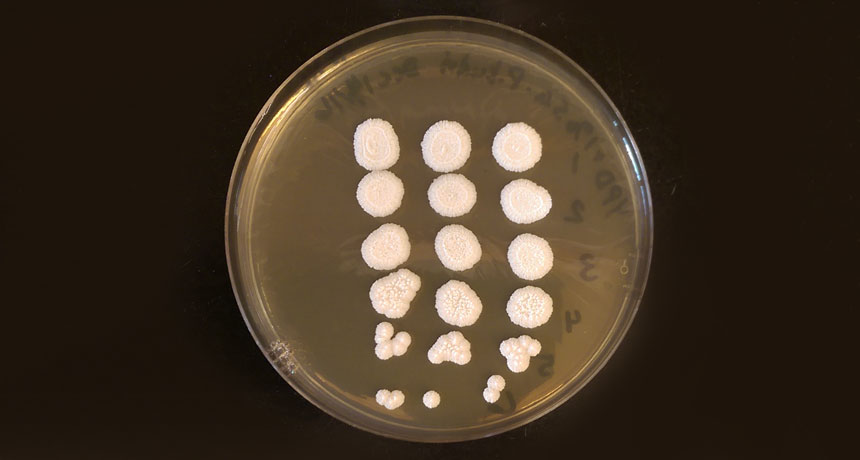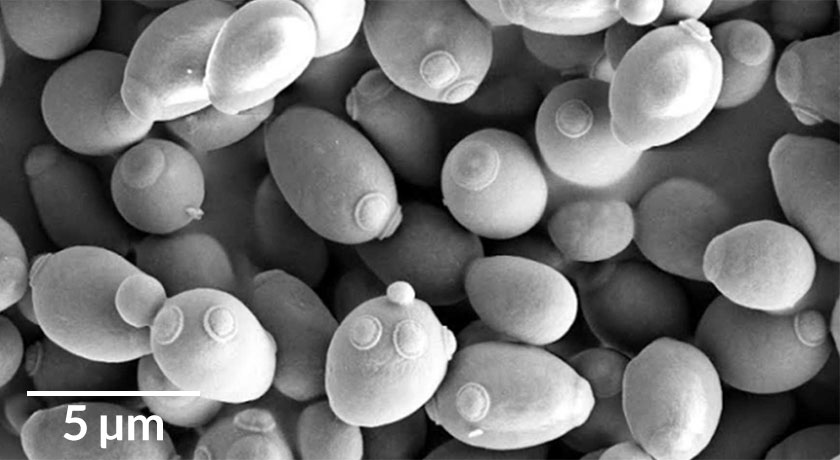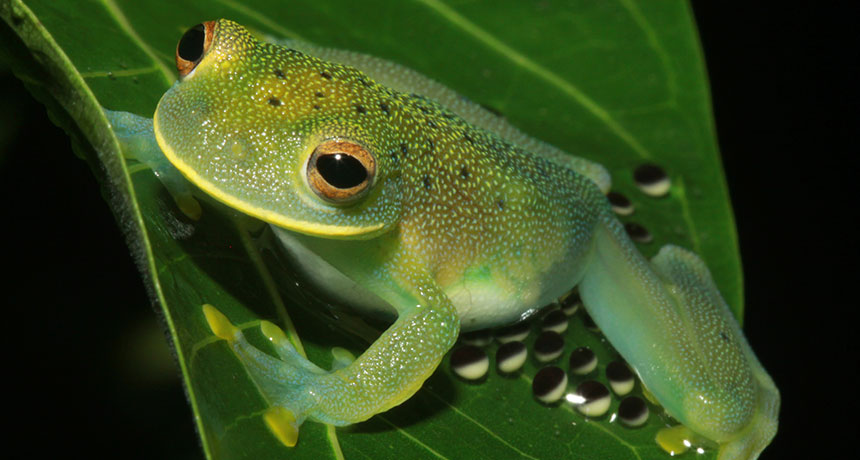Carbon can exceed four-bond limit
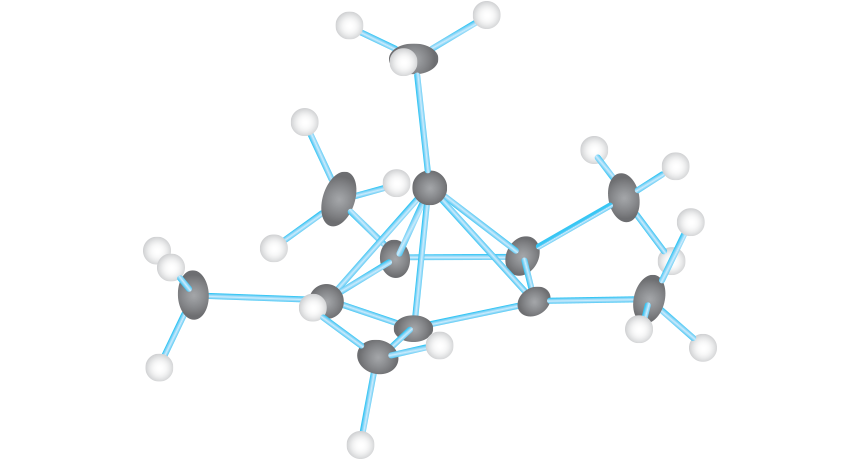
A molecule originally proposed more than 40 years ago breaks the rules about how carbon connects to other atoms, scientists have confirmed. In this unusual instance, a carbon atom bonds to six other carbon atoms. That structure, mapped for the first time using X-rays, is an exception to carbon’s textbook four-friend limit, researchers report in the Jan. 2 Angewandte Chemie.
Although the idea for the structure isn’t new, “I think it has a larger impact when someone can see a picture of the molecule,” says Dean Tantillo, a chemist at the University of California, Davis who wasn’t part of the study. “It’s super important that people realize that although we’re taught carbon can only have four friends, carbon can be associated with more than four atoms.”
Atoms bond by sharing electrons. In a typical bond two electrons are shared, one from each of the atoms involved. Carbon has four such sharable electrons of its own, so it tends to form four bonds to other atoms.
But that rule doesn’t always hold. In the 1970s, scientists made an unusual discovery about a molecule called hexamethylbenzene. This molecule has a flat hexagonal ring made of six carbon atoms. An extra carbon atom sticks off each vertex of the ring, like six tiny arms. Hydrogen atoms attach to the ring’s arms. And leftover electrons zip around the middle of the ring, strengthening the bonds and making the molecule more stable.
When the scientists removed two electrons from the molecule, leaving it with a positive charge, some evidence suggested it might dramatically change its shape. It seemed to rearrange so that one carbon atom was bonded to six other carbons. But the researchers didn’t experimentally confirm that structure.
Now, a different lab has revisited the question. Making this charged version of hexamethylbenzene is a challenge because it’s stable only in extremely strong acid, says study coauthor Moritz Malischewski, a chemist at the Free University of Berlin. And the experimental details in the old study were a bit fuzzy. But after a bit of tinkering, he managed to create the charged molecule. He and coauthor Konrad Seppelt crystallized it with some other molecules, and then used X-rays to get a three-dimensional map of the crystal structure.
The X-ray experiment confirmed what other scientists had suggested in the 1970s: When hexamethylbenzene lost two electrons, it reordered itself. One carbon atom jumped out of the ring and took a new position on top, turning the flat hexagonal ring into a five-sided carbon pyramid. And the carbon on top of the pyramid was indeed bonded to six other carbons — five in the ring below, and one above.
“This molecule is very exceptional,” says Malischewski. Though scientists have found other exceptions to carbon’s four-bond limit, this is the first time carbon has been shown associating with this many other carbon atoms.
When Malischewski measured the length of the molecule’s chemical bonds, the top carbon’s six bonds were each a bit longer than an ordinary carbon-carbon bond. A longer bond is generally less strong. So by picking more partners, that carbon has a slightly weaker connection to each one.
“The carbon isn’t making six bonds in the sense that we usually think of a carbon-carbon bond as a two-electron bond,” Tantillo says. That’s because the carbon atom still has only four electrons to share. As a result, it spreads itself a bit thin by sharing electrons among the six bonds.
